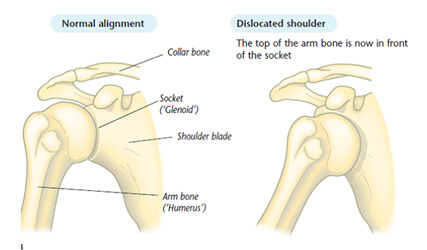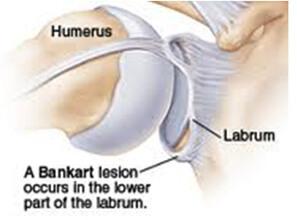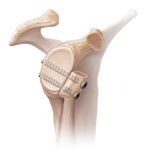Arthroscopic Bankart Repair
Recurrent Shoulder Dislocation
Recurrent shoulder dislocation is seen in young people where the shoulder frequently gets slips out of its socket. This causes extreme pain and discomfort to the patient. This usually follows injury to the capsule and ligament of the shoulder due to trauma.The patient is under constant fear of his shoulder getting dislocated.
Arthroscopic Bankart Repair
Arthroscopy has revolutionized the management of this problem. Previously open surgeries were performed leading to stiffness. But now torn ligaments are fixed by an arthroscopic technique where small keyhole cuts are made over the shoulder joint through which torn capsule & labrum is repaired. This technique has an excellent success rate without any stiffness or restriction of movement.
About your shoulder
The shoulder is a ball and socket joint. Most shoulder movements occur where the ball at the top of your arm bone (‘humerus’) fits into the shallow socket(‘glenoid’), which is part of the shoulder blade(‘scapula’). This means that it has a tendency to be ‘too loose’. There are various structures that help to keep the joint in position. They are ligaments, a rim of cartilage, and muscles.

Shoulder Dislocation
Most shoulders dislocate forwards and/or downwards. Sometimes the ball of the humerus bone only partly comes out of socket of the shoulder blade (glenoid). This is known subluxation.
When the first shoulder dislocation or subluxation occurs ligaments are often damaged at the front of shoulder. 70% of people who have shoulder dislocation have persistant symptoms of instability because the ligaments no longer keep the joint in position. This is particularly when the arm is lifted upwards and outwards. Gradually the shoulder may become loose and may dislocate spontaneously even while sleeping .

What tests are done?
The diagnosis is made based on your symptoms and clinical examination done by your doctor. An x-ray will be done to look at an obvious bony pathology. To know the extent of damage to the soft tissue structures (labrum) an MRI will be done. Rarely if a large bony defect is found in your socket (gleniod) a CT scan may be required.

How is the treatment done?
If the shoulder was lying dislocated and has been reduced, you will be given pain medications and an arm pouch for giving rest to your shoulder. After the pain subsides and your shoulder regains motion, you may be advised exercises.
The definitive treatment is surgical in which the torn part of the labrum is sutured back to the socket (glenoid). The most commonly done procedure is called Bankart repair. This can be done by arthroscopy (using small keyhole incisions and a camera to look inside the joint and repair the torn structures).

Advantage of arthroscopy:
- Early recovery
- Less blood loss
- Early initiation of physiotherapy.
After surgery
After the surgery, the arm is rested in an arm pouch for 2-3 weeks. Gentle pendulum exercises are started next day after the surgery. The sutures are removed after 2 weeks. Physiotherapy is done under supervision of our team of physiotherapist initially and later at home by the patient himself which has to be followed up at regular interval on OPD basis.
